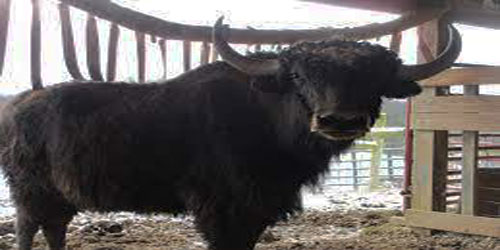
Making A Yak Habitat Frequently Asked Questions Here are 15 frequently asked questions on making a yak habitat:During winter or when grazing is limited, yaks will need supplemental feed like hay and grains to maintain their health. Fresh pasture during warmer months should meet most of their nutritional needs. Rotational grazing is a great way to ensure that pastures regenerate. Divide the pasture into sections and rotate yaks between them to prevent overgrazing. Yaks primarily graze on grasses, herbs, shrubs, and moss. They can feed on tough alpine plants that are resistant to cold temperatures. Fencing, particularly with higher barriers, is essential for preventing predators. You can also use guard animals like dogs to protect your yaks from potential threats. Yes, access to clean, fresh water is crucial. Yaks need a reliable water supply, especially during dry periods, to stay hydrated and healthy. Regularly clean the shelter and grazing areas by removing waste and debris. Ensure that the water source stays free of contamination, and consider composting yak manure as a natural fertilizer. Yaks thrive in cold temperatures, ideally between 30°F to 50°F (-1°C to 10°C). They can tolerate colder conditions but need proper shelter and access to food during harsh weather. Build a simple, sturdy shelter with a roof and open sides to allow for ventilation. Ensure it provides protection from snow, wind, and extreme cold, with enough space for all your yaks to comfortably rest. Yes, yaks can live in a mixed habitat with other livestock, but you should ensure that the other animals don’t compete for grazing space or food, and that they have compatible temperaments. A dirt or gravel floor is ideal as it helps with drainage and reduces the buildup of moisture, which can lead to health issues. Straw or wood shavings can be used for bedding. In mountainous areas, use terracing or fencing to create safe grazing areas for yaks. Ensure that the slope isn’t too steep for them to navigate and avoid erosion. Yaks prefer cold, dry climates with long winters and short summers. Areas with low humidity and high altitudes are perfect for them. Ensure the shelter is well-ventilated with open sides or windows. Fresh air circulation is essential to prevent respiratory problems and maintain a healthy environment. While trees can provide some natural shade and windbreaks, they do not provide adequate shelter during extreme weather. It’s better to build a designated shelter to meet their needs. Regularly clean the habitat and use the manure for composting or as natural fertilizer for your pasture. Ensure manure doesn’t build up in the shelter to prevent health issues. "Want To Raise Healthy Yaks? Get Gerard Dawn's Ebook That Will Guide You On How To Raise Healthy Profitable Yaks For Meat, Fiber Or Milk In Your Own Farm Yard Even If You're Just Starting Out In Yak Farming..." |
How To Raise Yaks Contact Us Terms of Use Privacy Policy About Us FAQ Site Map
